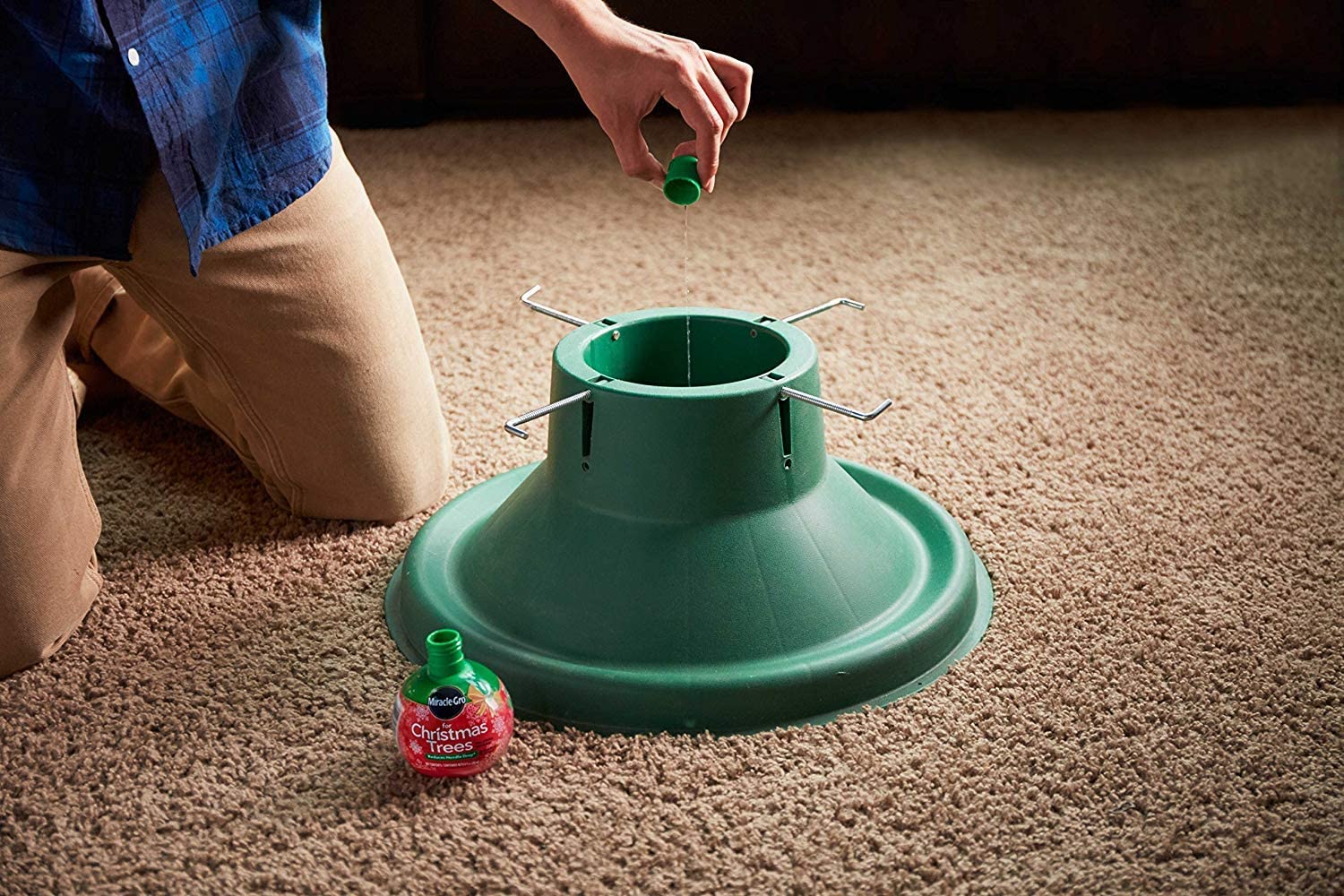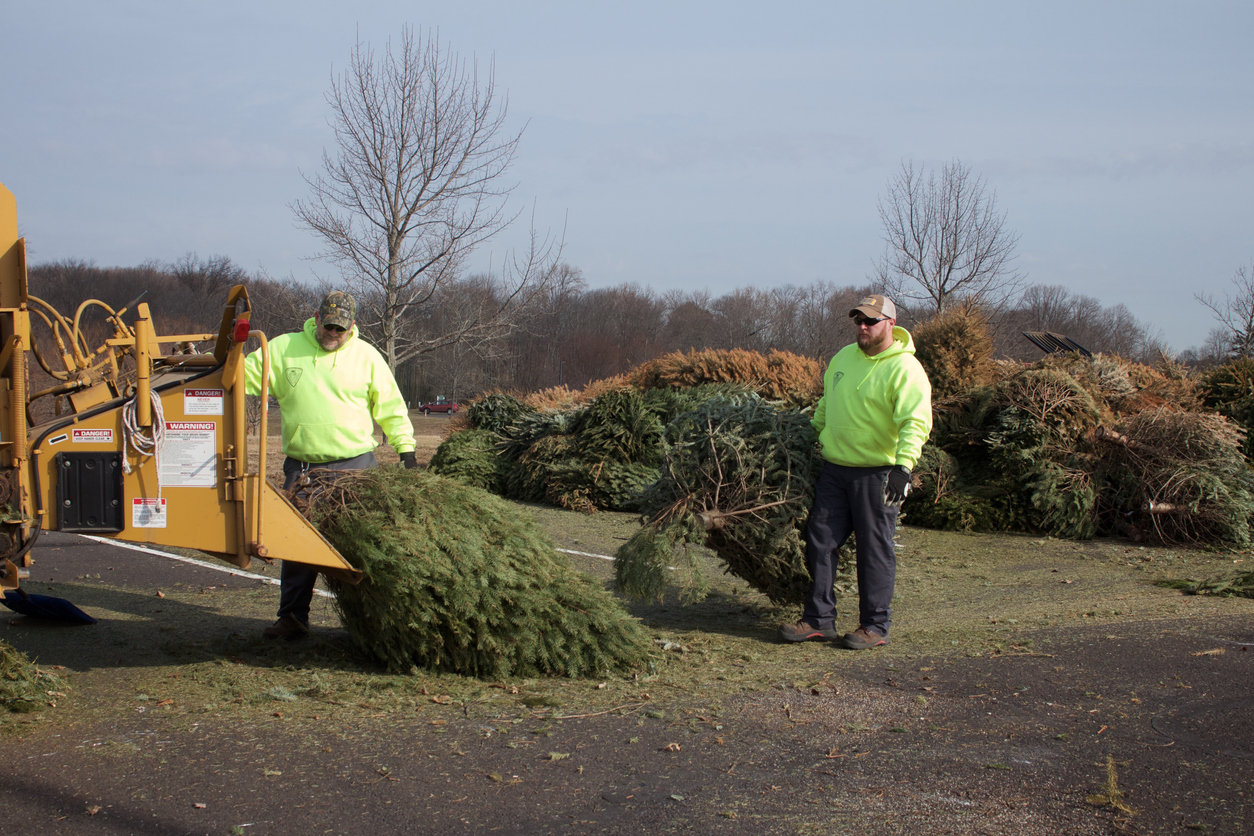

We may earn revenue from the products available on this page and participate in affiliate programs. Learn More ›
Oh, Christmas Tree
Everyone has advice about everything these days. And, now that Christmas is approaching, you’re certain to hear a lot of advice—whether online, on the radio, or from friends or family—about keeping your Christmas tree healthy. While great tips appear from time to time, a lot of what you hear might not actually be the best advice. Several Christmas tree care myths have been passed around for so long that many people swear they’re true.
RELATED: 8 Christmas Tree Care Myths Busted
1. Using baby diapers can help keep your tree hydrated.

Baby diapers are designed with hydrogels that soak up liquids and prevent leaks. Despite what many people say, these hydrogels (which may also be referred to as root water crystals, water jelly crystals, or water retention granules) will not actually help keep your Christmas tree hydrated. While hydrogels found in diapers are very effective at absorbing water, they do not really release it back out for use by a Christmas tree. Check the water level regularly and instead of diapers consider adding a plant nutrient mix, like Miracle-Gro for Christmas Trees available at Amazon, for a well-hydrated tree this season.
2. You should cut the trunk diagonally.

Whether your favorite type of Christmas tree is a Douglas Fir, Fraser Fir, or Scotch Pine, it may sound logical to give the trunk a diagonal cut to expose more of the trunk to the water for greater absorption. However, this is not actually the best way to cut a Christmas tree. As the water evaporates, the upper section of the trunk eventually won’t be in the water. A diagonal cut may also make it difficult to get your tree to rest evenly in the tree stand, which could make it more prone to tipping over.
A straight, perpendicular cut is best. Always give a Christmas tree a fresh cut to remove at least ¼-inch of the trunk within 12 hours or less of setting it up.
RELATED: How to Make Your Christmas Tree Last All Season
3. Christmas trees fill up landfills.

Just because cut Christmas trees are only good for one season, it doesn’t mean that they have to end up in a landfill. Most communities offer Christmas tree recycling programs in which the old trees are used to make soil erosion barriers, mulch, and other natural products. Even if Christmas tree recycling or drop-off events are not offered where you live, your tree still doesn’t have to end up in a landfill. Those with wood chippers can mulch their own tree, and where there is space, gardeners can leave the tree in areas of the yard to provide shelter or food for birds as it decomposes over time.
4. Artificial trees are better because they can be reused every year.

Some environmentally-conscious individuals advocate for choosing artificial trees to prevent killing a live tree. However, most Christmas trees come from a tree farm, where they are grown with the intent of harvesting them for use on Christmas. In this sense, they are much like any other crop. And, when they are cut down, seeds are often planted to grow a new tree.
Moreover, artificial trees aren’t as eco-friendly as some may think. They are often made using petroleum, and they typically only last between 6 and 9 years. After that time, they’ll end up in a landfill, where they won’t decompose easily.
RELATED: 8 Christmas Tree Care Myths Busted
5. Many people have allergies to live trees.

While possible, it is uncommon to have an allergy to a cut or living Christmas tree. Some people may experience allergy symptoms due to the dust, pollen, or mold that lands on a live tree before it’s cut down. You can limit your exposure to these allergens, while still enjoying a real Christmas tree in your home. Shake the tree well outside to remove loose dust or mold from the needles before bringing it into your home. Using a leaf blower, like the Greenworks cordless leaf blower available at Amazon, can help remove even more dust, pollen, mold, and other allergens from the tree.
Artificial trees are not always completely safe for allergy sufferers, either. After the holiday season, they are often stored in basements, garages, or attics, where dust or mold may also be present. The following season, the artificial tree could have some dust or mold spores that could lead to allergy symptoms for some members of the household. Whether you choose a live tree or an artificial Christmas tree, an air purifier could help lessen allergy symptoms by removing allergens particles from the air. We like this air purifier with HEPA filter at Amazon, a top pick in our list of best air purifiers for mold.
6. Adding aspirin to the water can help the tree stay healthy.

Aspirin—and a variety of other additives, such as sugar, lemonade, pennies, bleach, alcohol, corn syrup, and even birth control pills—have been rumored to help a cut Christmas tree stay healthy and hydrated. However, according to the National Christmas Tree Association, none of these additives will actually help your tree during the holiday season. In fact, they could actually cause more harm than good. Using anything but plain fresh water, and maybe a plant nutrient additive, might negatively impact the tree’s ability to retain moisture, causing it to lose more needles.
RELATED: 31 Vintage Christmas Ideas Worth Revisiting This Year
7. Remove the bark from the bottom of the trunk to help with water absorption.

Removing the bark from the lower portion of a Christmas tree’s trunk is another common piece of advice. However, just like everything else on this list, it is also a myth. Some people believe that taking off the bark will expose more of the tree’s cambium layer, allowing it to absorb more water. However, this isn’t what will happen. You’ll either end up cutting off too much bark that you damage the xylem—the tissue that is responsible for moving water throughout the tree—or you won’t cut deep enough to reach the xylem, so no water will be absorbed from the tree trunk’s sides.
Just cut a thin, straight section off the bottom of the trunk right before setting up your tree and skip the bark stripping.
RELATED: 7 Ways to Recycle Your Tree After Christmas
8. Real Christmas trees frequently cause fires.

We’ve all heard stories of house fires caused by Christmas trees. However, while it isn’t impossible for a real tree to catch on fire, it is very rare. According to the National Fire Protection Association, only 160 home fires nationwide between 2016 and 2020 were caused by Christmas trees. And, some of these fires were caused by artificial trees. That being said, it is still important to turn off your tree’s lights when you’re not home or when you go to bed. You should also make sure that your Christmas tree is kept away from heat sources like candles, fireplaces, or wood stoves.
Overloaded outlets are much more likely to be at fault for a house fire. Each year, there are approximately 5,000 fires caused by overloaded outlets, with approximately 40 percent of these fires occurring during the holiday season. Choose a fresh tree, place it in a safe spot, avoid overloading a circuit, and turn off lights as recommended to reduce fire risk.
RELATED: 20 Surprising Stories Behind Popular Christmas Decorations
